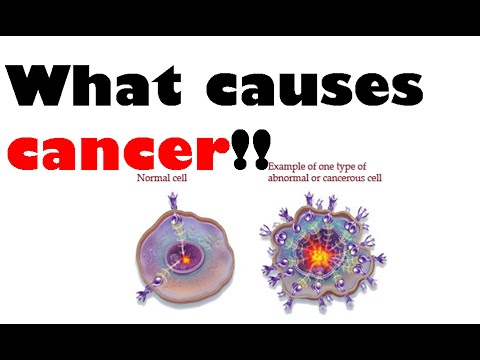Lung cancer conjures up an image of a chronic smoker. While it is true that smoking causes 4 in 5 cases of lung cancer, the trend of lung cancer in non-smokers is also on the rise. A recent study reported a doubling of lung cancer incidence in non-smokers and this was not due to change of proportions but due to rise of absolute numbers. This brings up the question of why non-smokers get lung cancer.
Cancer is a disease caused by an uncontrolled division of abnormal cells in a part of the body. These cells divide in uncontrolled manner because of mutational changes in their genetic machinery which makes them pro-division. These mutational changes do not develop suddenly but are accumulated over years in an individual and a cancerous growth manifests only when they are sufficient. The carcinogenic (cancer causing) substances that we know about are those that accelerate the process of these mutational changes.
WHY NON-SMOKERS GET LUNG CANCER?
Second-hand smoking: Second-hand smoking is of two types; first type is that the one exhaled by smoker and the other which rises from the smouldering end of cigarette, bidi, hookah or cigar. Of the 700 chemical in second-hand smoke, 70 are known carcinogens. The US-based National Institute for Occupational Safety and Health (NIOSH) recognises that there are no known safe levels of second-hand smoking and recommend that exposures should be reduced to the lowest possible levels. It is reported that thousands of adults die of lung cancer due to second-hand smoking.
Carcinogens at work: For some people, the workplace can be a source of exposure to carcinogens like asbestos and diesel exhaust. The health and safety executive of the NHS of the UK estimates that 20 people could be dying due to asbestos-related exposure every week.
Diesel smoke has two parts namely the fumes and the soot. Both these contain polycyclic aromatic hydrocarbons or PAH. The International Agency for Research on Cancer (IARC) classifies diesel engine exhaust as carcinogenic. The safety standards at workplace are defined by law, indeed the same if implemented strictly can check the workplace exposure of carcinogens.
Also, if someone has been exposed for significant periods with these in the past, one must stop smoking and tobacco consumption to avoid multiplication of risk.
Air pollution: The WHO based on its review of 1,000 scientific papers classified outdoor air pollution as a carcinogen. This is one area of special concern for our population as India has a relatively high pollution index in the world. In a study in 2013, Indians were found to have a 30% lower lung function as compared to western counterparts.
The major source of this pollution is due to biomass burning, fuelwood and vehicular emissions. Background Radiation: A common source of carcinogenic background radiation is the Radon gas. The Environmental Protection Agency in the US (EPA) estimates about 21,000 deaths due to lung cancers in non-smokers attributable to Radon gas. Fortunately, Radon gas is not found in our country. However, there are places in coastal India where background radiation has been reported to be high, however, it remains to be seen how much the same translates into cancer risk.
While avoiding smoking is still important because smokers have a 26 times risk of lung cancer, it is important for us being aware of this rising entity.
EARLY WARNING SIGNS
Symptoms and indications of lung cancer do not appear until advanced and that qualifies for late detection. While it is true that the first symptoms are set off by incessant coughing, all coughs may not be due to start of a lung cancer. Some of the apparent symptoms are:
– Persistent cough
– Cough with blood
– Breathlessness
– Wheezing and hoarseness
– Unexplained loss of weight
BACK PAIN AND LUNG CANCER
There are multiple reasons for back pain. But one cannot ignore the fact that back pain can actually be one of the first signs or symptoms of lung cancer. Lung cancer-induced back pain could also be a result of the tumour contributing to back pain by creating pressure on the structures in the back. Lung cancer is known to irritate nerves travelling through the chest region manifesting as back pain in some cases. Spread of the cancer through blood from one part of the body to another is also known to contribute to back pain and roughly 30-40% people incur this with lung cancer. Metastasis to the adrenal gland located near the top of kidneys could be a possible reason for back pain in patients with lung cancer.
Need for more Radiation Therapy Units: The current day incidence of cancer in our country is pegged to be at about 12 lakh new cases every year. It is estimated that close to 80% of these patients need radiation therapy during the course of their treatment (unpublished data from AIIMS). Going by this, our country is not having even half of the required Radiation therapy units.
Need for Multi-disciplinary management: Cancer treatment is multi-disciplinary in nature which can be akin to a symphony where multiple specialities have to work together as a team. For example, delivery of radiation therapy and chemotherapy concurrently OR placement of radiation therapy implants (brachytherapy) during the course of an on-going surgery. These plans are made after sitting together for a “tumour board” discussion, which unfortunately is lacking in our country.





